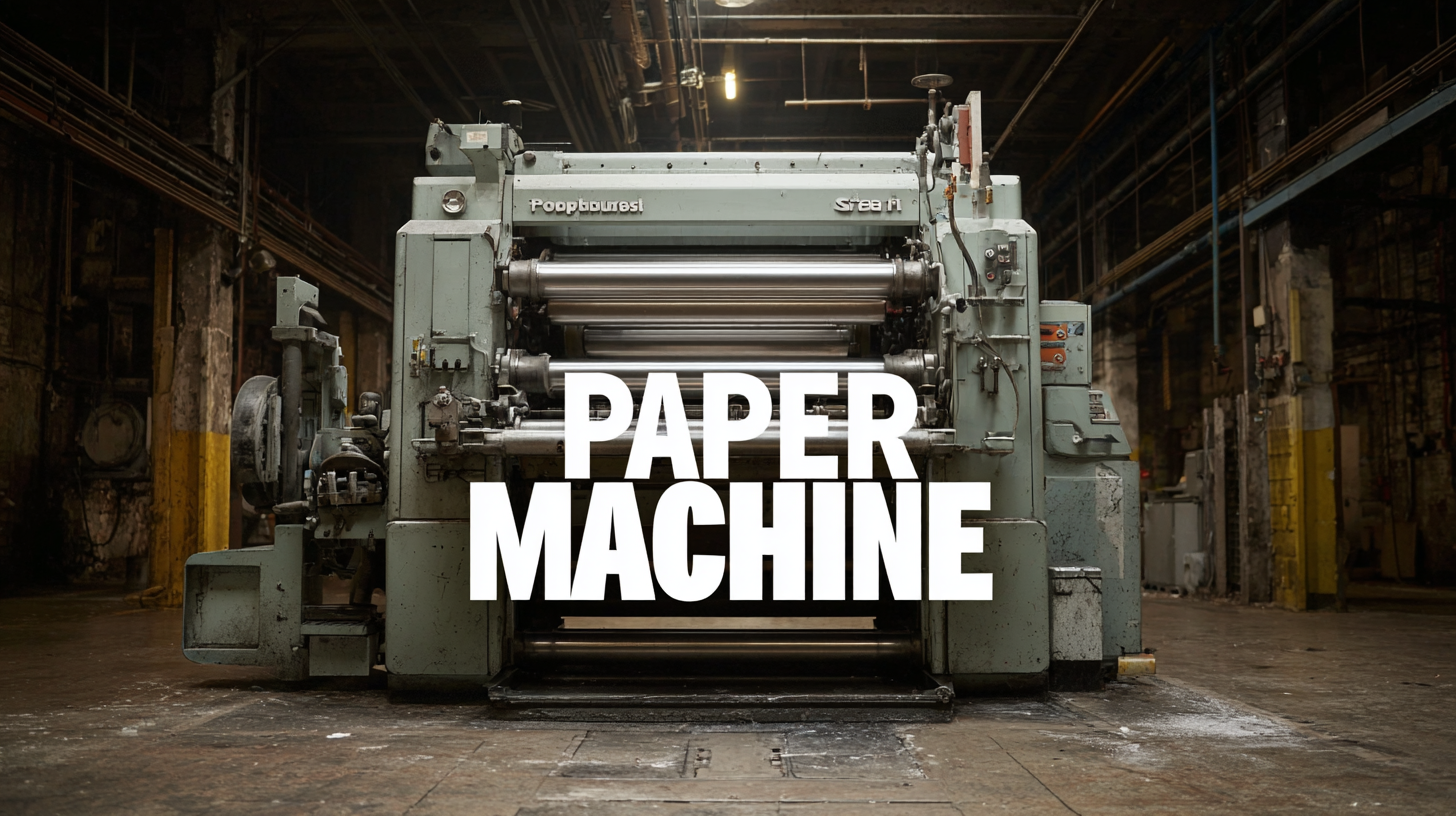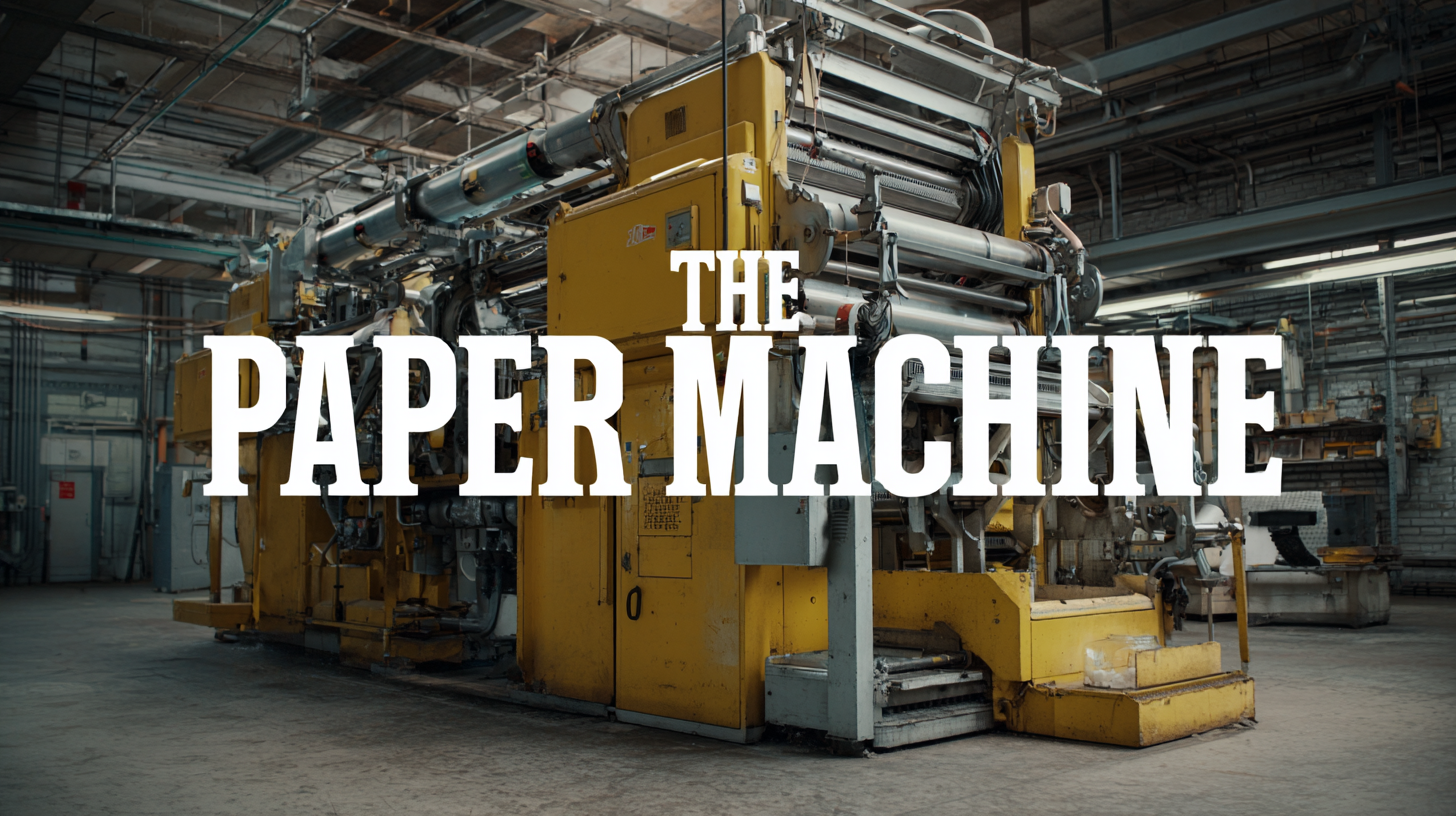
Maximizing After Sales Service Benefits for Best The Paper Machine with Real Life Repair Cost Examples
In an ever-evolving industrial landscape, maximizing after-sales service benefits for The Paper Machine has become a critical focus for manufacturers aiming to enhance operational efficiency and customer satisfaction. According to recent industry analyses, the paper machinery market is projected to grow significantly, reaching approximately $45 billion by 2025, driven by increasing demand for sustainable production practices and technological advancements. A pivotal aspect of sustaining this growth lies in effective maintenance and repair strategies, which are essential in minimizing downtime and reducing operational costs. For instance, case studies reveal that companies investing in comprehensive after-sales services can see a reduction of repair costs by up to 30%, ultimately leading to improved productivity and profitability. This blog will explore practical tips and real-life examples that highlight the importance of strategic after-sales services, ensuring that enterprises not only maintain their competitive edge but also adapt to the rapidly changing market dynamics.

Maximizing After Sales Service for Paper Machines: Understanding Cost Implications
Maximizing after-sales service for paper machines is essential not only for ensuring efficient operations but also for understanding cost implications that can significantly impact overall profitability. When companies invest in high-quality paper machines, it’s equally important to consider the total cost of ownership, which includes maintenance and repair expenses. Proper after-sales service can minimize unexpected breakdowns, thereby lowering repair costs. A well-structured service program can help identify and address potential issues early, ultimately stretching the lifespan of machinery and optimizing production efficiency.
Real-life repair cost examples can provide insightful benchmarks for businesses. For instance, a paper machine that incurs an average annual repair cost of $15,000 may seem manageable, but if not coupled with effective maintenance strategies, these costs can escalate rapidly, especially during peak production seasons. Regular training for maintenance staff and having access to genuine spare parts can significantly reduce these incidents. Investing in comprehensive after-sales support not only enhances machinery performance but also fosters a culture of proactive maintenance, ensuring that companies enjoy the benefits of uninterrupted production and minimized total operating costs.
Real-Life Examples of Repair Costs in the Paper Industry: Analyzing Common Failures
When it comes to the paper industry, understanding the common failures of paper machines and their repair costs can significantly enhance after-sales service. For instance, one prevalent issue involves the drying section of the machine, which often requires repair due to wear and tear. The average cost of fixing a drying cylinder can range from $5,000 to $15,000, depending on the severity of the damage and necessary replacement parts. By keeping track of these costs, manufacturers can better budget for maintenance and minimize unexpected expenses.
Another common failure arises in the press section, where the wear on felt rolls leads to decreased efficiency and increased energy consumption. Repair costs for replacing felt rolls can vary widely, typically falling between $3,000 and $10,000. Utilizing real-life repair cost examples allows companies to create more accurate financial forecasts and invest wisely in preventive maintenance strategies, thus extending the lifespan of their machinery. Through this analytical approach, businesses can not only optimize their operational efficiency but also improve customer satisfaction by ensuring that their machines run smoothly with minimal downtimes.
Maximizing After Sales Service Benefits for Best The Paper Machine with Real Life Repair Cost Examples
| Failure Type | Average Repair Cost (USD) | Downtime (Hours) | Common Causes |
|---|---|---|---|
| Bearing Failure | $2,500 | 10 | Insufficient lubrication, contamination |
| Roller Misalignment | $1,800 | 8 | Improper installation, vibration |
| Pump Failure | $3,200 | 12 | Wear and tear, cavitation |
| Control System Failure | $4,500 | 15 | Software bugs, hardware malfunction |
| Web Break | $1,200 | 5 | Poor web tension, material defects |
Optimizing Maintenance Strategies to Enhance Paper Machine Longevity and Performance
To enhance the longevity and performance of paper machines, it is essential to adopt optimized maintenance strategies. A proactive maintenance approach not only minimizes unscheduled downtimes but also extends the equipment's life cycle. Regular inspections and condition monitoring can help identify potential issues before they escalate into costly repairs. Implementing predictive maintenance strategies, such as vibration analysis and thermal imaging, allows paper mills to schedule maintenance during non-peak hours, thereby improving overall productivity and reducing disruption.
Moreover, investing in training for maintenance personnel can significantly boost the effectiveness of these strategies. Skilled technicians equipped with the knowledge of best practices in maintenance can efficiently handle repairs, conduct thorough inspections, and operate machinery within optimal parameters. This empowers paper mills to fine-tune their maintenance schedules based on real-time data, ensuring that every machine operates at peak efficiency and contributing to better overall performance. By focusing on these optimized strategies, facilities can realize substantial cost savings and improved output, solidifying their competitive edge in the paper manufacturing industry.
Impact of After Sales Service on Overall Operational Efficiency in Paper Manufacturing
In the paper manufacturing industry, optimizing after-sales service is crucial for enhancing overall operational efficiency. Companies are increasingly realizing that strong after-sales support not only satisfies customer needs but also drives profitability. A recent trend highlights how empowered electronics service and support can significantly boost operational efficiency and customer retention. By leveraging AI technologies, businesses can streamline their service processes, ensuring that maintenance and repair are conducted swiftly and effectively, ultimately minimizing downtime.

For instance, organizations focusing on after-sales service can achieve margins as much as 20% higher compared to traditional manufacturing practices. Incorporating customer feedback metrics into operational strategies can lead to significant improvements in firm performance. Metrics derived from customer interactions help identify areas for enhancement, allowing firms to adapt their services to better meet client demands.
Tips for maximizing after-sales service benefits include continuously investing in AI-driven solutions for predictive maintenance, which can anticipate failures before they occur, thus reducing repair costs. Additionally, fostering a culture of responsiveness where customer feedback is actively sought and integrated into service planning can markedly improve client satisfaction and retention.
Leveraging Data Analytics to Predict and Reduce Repair Costs in Paper Machines
The integration of data analytics into after-sales service for paper machines is transforming the way companies manage repair costs. By leveraging predictive maintenance (PdM) models, companies can anticipate equipment failures before they occur. This proactive approach not only minimizes unplanned downtime but also drastically reduces repair expenses. For instance, using real-time sensor data, these models can identify patterns that indicate an imminent failure, allowing for timely interventions.

Moreover, the deployment of advanced analytics dashboards empowers engineers to visualize critical information from their machines. By regularly monitoring parameters such as pressure, temperature, and vibration, maintenance teams can make informed decisions based on accurate data. This leads to optimized maintenance schedules and resource allocation, ensuring that repairs are carried out efficiently and cost-effectively.
As businesses continue to embrace these innovative technologies, the capability to predict and reduce repair costs will only enhance their competitive edge in the paper production industry.
